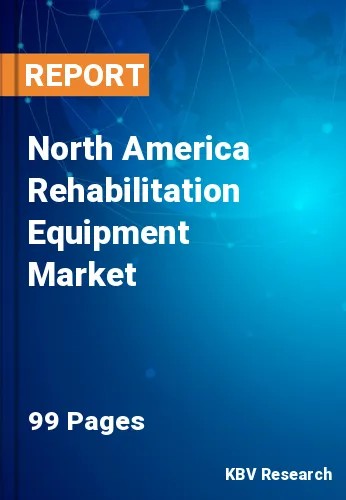The North America Rehabilitation Equipment Market would witness market growth of 6.1% CAGR during the forecast period (2023-2029).
The rise in the prevalence of many chronic and non-communicable diseases, such as cancer, arthritis, and Parkinson's, enables the broad usage of rehabilitation equipment in hospitals, clinics, home care settings, and rehabilitation and physiotherapy centers. This is particularly true for the aging population. This trend's capacity to allow patients to obtain tailored training medications and communicate diagnostics data with rehabilitation specialists is also a critical growth-inducing aspect.
In addition, leading competitors are aggressively collaborating with other companies to provide economical, durable, and high-performance rehabilitation equipment, contributing to the market's expansion and satisfying the rising need for enhanced equipment and clinical outcomes. Furthermore, other factors, such as rising consumer healthcare expenditures, increased investment in research and development (R&D), and a number of beneficial initiatives taken by governments and non-governmental organizations (NGOs) of various countries to strengthen the current healthcare infrastructure, are contributing to the market's optimistic outlook.
Risk factors for osteoporosis include personal and family fracture histories. The Public Health Agency of Canada projected that roughly 1.5 million Canadians aged 40 and over (10%) have osteoporosis based on the 2009 Canadian Community Health Survey. Women were four times more likely than men to report osteoporosis among these individuals. Due to their lower initial bone mass and faster rate of bone mass loss as they age, women are more likely than males to acquire osteoporosis. The increasing cases of osteoporosis, especially in women, will surge the requirement for rehabilitation equipment to recover and for movement assistance, propelling the market growth in the region.
The US market dominated the North America Rehabilitation Equipment Market by Country in 2022, and would continue to be a dominant market till 2029; thereby, achieving a market value of $7,964.9 million by 2029. The Canada market is poised to grow at a CAGR of 8.6% during (2023 - 2029). Additionally, The Mexico market would witness a CAGR of 7.6% during (2023 - 2029).
Based on Application, the market is segmented into Physiotherapy, Occupational Therapy and Others. Based on Product Type, the market is segmented into Mobility Aids, Daily Living Aids, Exercise Equipment and Body Support Devices. Based on Mobility Aids Type, the market is segmented into Wheelchairs, Scooters and Walking Aids. Based on Daily Living Aids Type, the market is segmented into Medical Beds and Bathroom, Toilet Assist Devices & Others. Based on Exercise Equipment Type, the market is segmented into Upper Body Exercise Equipment and Lower Body Exercise Equipment. Based on Body Support Devices Type, the market is segmented into Patient Lifts and Medical Lifting Slings. Based on End User, the market is segmented into Hospitals & Clinics, Rehabilitation Centers and Homecare Settings. Based on countries, the market is segmented into U.S., Mexico, Canada, and Rest of North America.
Free Valuable Insights: The Worldwide Rehabilitation Equipment Market is Projected to reach USD 32.3 Billion by 2029, at a CAGR of 7.4%
The market research report covers the analysis of key stake holders of the market. Key companies profiled in the report include Invacare Corporation, Ekso Bionics Holdings, Inc., ReWalk Robotics Ltd., Baxter International, Inc., Medline Industries, Inc., GF Health Products, Inc., Drive DeVilbiss Healthcare (Medical Depot, Inc.), Roma Medical Aids Limited, Hospital Equipment Mfg. Co. and Caremax Rehabilitation Equipment Co. Ltd.
By Application
By Product Type
By End User
By Country
Our team of dedicated experts can provide you with attractive expansion opportunities for your business.

